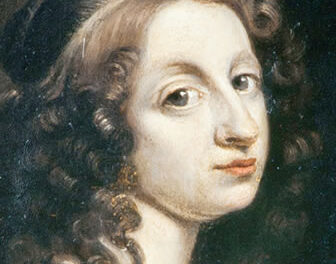An outdoor concert in December? No! A concert of outdoor music! Oh. OK.
The Chapel Hill Philharmonia brought a summer carnival and a pleasant day in the country to be enjoyed alongside Beethoven’s gently flowing brook. In spite of a violent (but brief) thunderstorm, all ended well, with thankful feelings and wondrous peace after the storm. The audience was also treated to stirring marches and warm lyrical melodies of the Finnish Karelia.
For over thirty years, the Chapel Hill Philharmonia has provided opportunities for musically trained people in this artistically rich community to study, rehearse, and perform great classical music for the pleasure and gratification of many.
Guest conductor Evan Feldman (Associate Professor of Music at UNC-CH and conductor of the Wind Ensemble and Symphony Band there) prepared the orchestra well and led a very impressive performance. Concertmaster Mark Furth provided informative and well-written program notes.
The opening selection was the “Roman Carnival” Overture, Op. 9, by Hector Berlioz (1803-69). Composed in 1843-44 as a concert piece, the work utilizes themes from the opera Benvenuto Cellini and is somewhat related to the second act of the opera which is set in a carnival in Rome. Lively dances are interrupted by a beautiful love song (actually the love duet from the first act) set for English horn and played beautifully by oboist John Konanc. The love theme and the earlier dances mingle, with the dance spirit leading into a surge of effervescent energy as the overture ends. The Philharmonia’s enthusiasm and vigor made for an exciting and pleasurable experience.
Jean Sibelius’ Karalia Suite, Op. 11 (1893), consists of two lively and infectious marches that sandwich a lyrical Ballade. The first march, introduced by a hunting fanfare played by the French horns over hovering strings, was one of the most challenging passages of the evening. The trumpets launched into a rustic toe-tapping march, robustly played, and the movement ended with a return to the horns. The second movement began with an introduction by the woodwinds, after which the strings relished an extended rhapsodic melody that was passed on to the oboe. The third movement consists of a lively introduction leading into another unforgettable march, played with vitality and charm by the brass and the full orchestra.
The major work on the program was Beethoven’s lovely and charming “Pastoral” Symphony No. 6, composed during the same period that saw the creation of the monumental Fifth. Both symphonies were premiered in Vienna on December 22, 1808, in an all-Beethoven concert that also included the premieres of Piano Concerto No. 4 and the Choral Fantasy. The “Pastoral” is one of only a very few Beethoven works that have a specific programmatic structure. He suggested that the symphony was “more the expression of feeling than painting.” These are its component parts:
Movement 1. “Awakening of cheerful feelings upon arrival in the countryside.” Bring a picnic basket with wine, cheese, and bread – my suggestion. This movement is the most thoroughly developed in the symphony. It is cheerful, with many short motifs developed through variations and repeats.
Movement 2. “Scene by the brook.” This movement is definitely pictorial, with a motif that clearly suggests flowing water. It ends with a woodwind passage that imitates birdcalls.
Movement 3. “Merry gathering of country folk/” An altered scherzo, this movement suggests livelier activity, perhaps after consuming a generous portion of wine. It is interrupted, and without pause, encounters the next movement.
Movement 4. “Thunder. Storm.” This movement, marked Allegro, depicts, quite realistically, a sudden summer thunderstorm. As the storm moves off with fading rumbles of thunder in the distance, the music moves, without pause, into the final movement.
Movement 5. “Shepherd’s Song. Happy and thankful feelings after the storm.” All is calm and there is a sense of peacefulness and perhaps prayer. The work ends with two emphatic F major chords.
What was remarkable about this performance was the sensitive shaping of phrases, the dynamic rise and fall of motifs, and the fitting of each into the scope of the total work. The ensemble was clean, and the attacks and cutoffs were precise. In other words, all of the techniques of musicianship that make notes printed on a page of paper become live music were effectively present.
Aren’t those of us who love to hear great classical music fortunate to have an organization like the Chapel Hill Philharmonia and conductors like Feldman to provide it for us – and for free?











